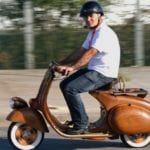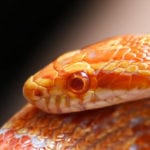 Our World
Our World  Our World
Our World  Movies and TV
Movies and TV 10 Times Twin Movies Competed with Each Other
 The Arts
The Arts 10 Masterpieces Plucked from the Artist’s Subconscious
 Crime
Crime 10 Fascinating Facts about Rikers Island
 Pop Culture
Pop Culture 10 Things You Might Not Know about Dracula
 Weird Stuff
Weird Stuff 10 Everyday Activities That Were Once Considered Illegal
 History
History Ten of History’s Hidden Secrets: Stories 99% Don’t Know About
 Movies and TV
Movies and TV 10 Actors Who Infamously Stormed Off Set While Filming
 Food
Food 10 Foods That Have Alleged Occult Powers
 Sport
Sport 10 Lesser-Known Multi-Sport Alternatives to the Olympics
 Our World
Our World Planet Earth’s 10 Most Hardcore Natural Creations
 Movies and TV
Movies and TV 10 Times Twin Movies Competed with Each Other
 The Arts
The Arts 10 Masterpieces Plucked from the Artist’s Subconscious
Who's Behind Listverse?

Jamie Frater
Head Editor
Jamie founded Listverse due to an insatiable desire to share fascinating, obscure, and bizarre facts. He has been a guest speaker on numerous national radio and television stations and is a five time published author.
More About Us Crime
Crime 10 Fascinating Facts about Rikers Island
 Pop Culture
Pop Culture 10 Things You Might Not Know about Dracula
 Weird Stuff
Weird Stuff 10 Everyday Activities That Were Once Considered Illegal
 History
History Ten of History’s Hidden Secrets: Stories 99% Don’t Know About
 Movies and TV
Movies and TV 10 Actors Who Infamously Stormed Off Set While Filming
 Food
Food 10 Foods That Have Alleged Occult Powers
 Sport
Sport 10 Lesser-Known Multi-Sport Alternatives to the Olympics
10 Real Deformities You Have To See To Believe
Whether deformities are caused by genetics or environmental factors, they spark curiosity and awe throughout the world. Many who have them have accepted their differences and led fulfilling lives. Some have undergone risky surgeries to change their appearance. Some have joined the circus and embraced the label “freak” to make living. Others have concealed themselves to avoid people’s reactions.
10Cutaneous Horns

Cutaneous horns (cornu cutaneum) result when keratin manifests in a conical shape and protrudes outward from the skin. Lesions found at the base of these horns may be malignant or benign.
When cutaneous horns grow, they tend to be on people with fair skin, at an average age of 50. Sun-exposed areas of skin are most susceptible. A biopsy can help determine the cause because cutaneous horns are related to a variety of medical issues. Possibilities range from verruca to Bowen’s disease. The majority of horns are benign, but about 20 percent are cancerous, and another 20 percent are pre-cancerous.
Some people even choose to let their benign horns grow. If a horn does sprout on your forehead, you can at least now rest assured that you’re probably not turning into a demon.
Note: Most cutaneous horns are shorter than the one pictured above.
9Aniridia

Black eyes aren’t necessarily a sign of pure evil. A condition called aniridia can cause absence of color in the iris, which may lead to weakened vision and sensitivity to light. This figures, as the literal translation of aniridia is “without iris.” Further conditions, such as glaucoma and cataracts, are likely to occur along with aniridia. Sufferers may be legally blind, may see well enough to drive, or may even have 20/20 vision.
A gene mutation causes this condition. It occurs around the end of the first trimester of pregnancy, as the eye develops. Aniridia can be inherited; a parent with this condition has a 50-percent chance of passing it on to his or her child. Parents who each have a mutated copy of the PAX-6 gene may be at risk for having a child with Gillespie syndrome (autosomal recessive aniridia) and related cognitive disabilities.
8Backward-Bending Knees

People with genu recurvatum have knees that bend backward surprisingly far, sometimes creating an animal-like appearance. The most severe cases involve a congenital dislocation of the knees. Other cases involve differences in leg length or diseases such as cerebral palsy and multiple sclerosis. Another cause is physical trauma to the knee. It could happen while playing sports or in a car accident, for instance.
Surgery and physical therapy can help treat the condition. Leg braces may also be used. Depending on how well treatment works, this condition may become a permanent disability for some individuals.
To date, the most well-known case of genu recurvatum is that of Ella Harper, born in Tennessee circa 1870. Ella preferred to walk on all fours. She was dubbed “Camel Girl” and found great success in the role. She even starred in W.H. Harris’s Nickel Plate Circus in 1886 and used the profits to better her life.
7Prune Belly
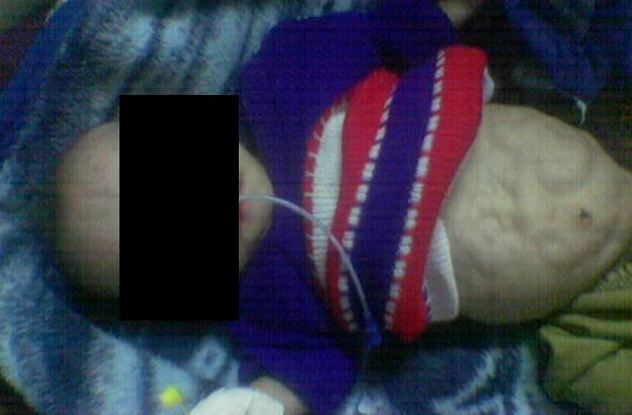
Known more formally as Eagle-Barrett syndrome, prune belly syndrome causes extreme weakness in the abdomen. This leads to severe wrinkling and a prune-like appearance. The bladder of an Eagle-Barrett patient becomes permanently expanded and difficult to relieve, leading to further medical challenges. The genitalia, internal organs, and skeleton may also be negatively affected.
The cause of this condition is currently undetermined. It’s possible that prune belly syndrome is hereditary, as multiple cases have been noted within families. Parents usually have fair warning. When a fetus is affected, the prune-like appearance of the belly is often visible through prenatal ultrasound, allowing for early diagnosis. Undescended testicles are another symptom.
Nearly all Eagle-Barrett syndrome cases involve males—95 percent, to be exact. Children with this condition are often stillborn, and those who make it past delivery may die soon from related complications, but some do survive.
6Lobster Claws

People born with ectrodactyly tend to have deformities of both their hands and their feet. Varying degrees of surgery are used to correct this condition.
Known commonly as split hand/foot malformation (SHFM), lobster claw syndrome involves missing fingers or toes along with gaping clefts in the sufferer’s hands or feet. Fingers or toes are fused with other digits or webbed.
If only one limb is deformed, it likely occurred due to a non-hereditary genetic mutation. If the hands and feet are all deformed, the condition was inherited. Parents who carry the gene have a 50-percent chance of passing it down to their offspring. Some choose to have children despite the high risk.
Lobster claw syndrome is not related to more complicated medical conditions or mental barriers. The only challenge is learning to function with hands and feet shaped differently than most.
5Neurofibromas
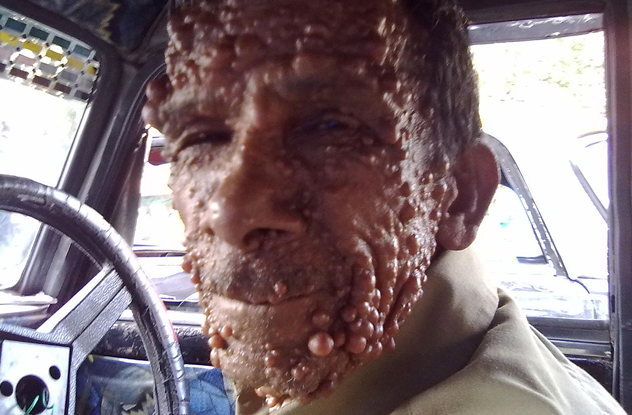
Those with neurofibromatosis have tumors (“neurofibromas”) on their nerves or under the skin. The tumors can often be removed. Even when they can’t be excised, they’re benign and won’t cause physical harm in the majority of cases.
Of the two types of neurofibromatosis, Recklinghausen disease is the most common. It can be, and often is, inherited. Parents with Recklinghausen have a 50-percent chance of passing it on to their children. If there is no family history of the disease in a Recklinghausen patient, the condition is caused by a genetic mutation at conception.
Cases of this disease range from mild to severe to debilitating. The bulbous lumps can absolutely blanket skin in more extreme cases.
4Supernumerary Nipples
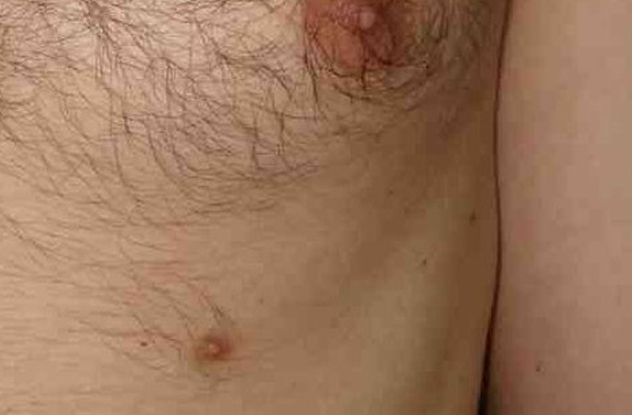
When more than two nipples grow on a body, the condition is known medically as polythelia. Extra nipples typically form along the milk lines, which run from the upper torso to the groin area. Cases have been recorded in which supernumerary nipples appear elsewhere on the body, though. Other places they may occur include the thighs, face, and neck.
Regardless of where these abnormalities pop up, they are physically harmless. Underdeveloped nipples are often mistaken for moles, so removal is typically done for cosmetic reasons. Celebrities such as Mark Wahlberg have famously accepted and embraced their third nipples. Harry Stiles of the band One Direction admitted to having four altogether. However, not everyone shows their supernumerary nipples so much love. Carrie Underwood had hers removed, which she admitted at her American Idol audition.
This particular deformity is relatively common, affecting 1–6 percent of the American population. You may well know somebody who has an extra nipple of their own.
3The Caudal Appendage
A caudal appendage is a human tail, which is not like an animal tail. Human tails don’t help people balance better or swat away flies. In some cases, they’re symptomatic of much more serious conditions, such as spina bifida.
All humans have a spinal protrusion in the womb. It’s typically absorbed in utero, but not all fetuses develop predictably. When a caudal appendage is not absorbed, the child ends up with a tail. It consists of fat, muscle, nerves, and blood vessels without any bone or cartilage.
Fewer than 40 cases of this medical rarity have been recorded. It affects males twice as often as it affects females. A caudal appendage may be removed if surgery is deemed safe.
2Polymastia
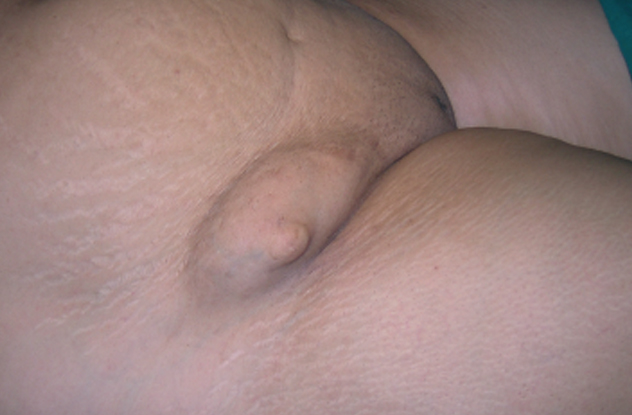
When an unexpected breast grows on the human body, the condition is called polymastia. Extra breasts tend to appear in the same place supernumerary nipples grow: the milk line, which runs down the torso and to the groin. They can, however, also appear on the buttocks, the back, the hip, or even the face.
Accessory breasts contain the same tissue as typical breasts. This means that a third breast can harbor a malignant tumor and threaten the patient’s life. It’s also possible for third breasts to feature nipples and lactate, though it’s not guaranteed. These are simply possibilities that come with all breasts, wherever they happen to grow.
Polymastia is an anomaly of nature that extends beyond the human species. A few primates have been diagnosed with this condition. It’s rarer in the animal kingdom, but science has confirmed there’s such a thing as a three-breasted monkey.
1Hypertrichosis

Hypertrichosis is also known medically as Ambras syndrome and cheekily as “werewolf syndrome.” Genetics cause people with hypertrichosis to have an excessive amount of hair, which may grow all over the body or only in concentrated areas. Ambras syndrome may also be acquired later in life—in relation to cancer, for example.
Fewer than 60 cases have ever been recorded, but this is not just a rarity for the history books. People with hypertrichosis live today. In 2010, Supatra “Nat” Sasuphan of Thailand earned a spot in the Guinness Book of World Records as the hairiest teenager.
She’s one of many who’ve made the best of especially unique physical traits. People can embrace and find success through their differences, especially when those oddities are strange enough to be seen as extraordinary.
Shannon M. Harris is a writer from the Seattle area. She enjoys watching stand-up comedy, visiting quirky roadside attractions, and exploring nature—as long as nature isn’t trying to kill her. Connect with (and hire) her at WriterBug.org.


